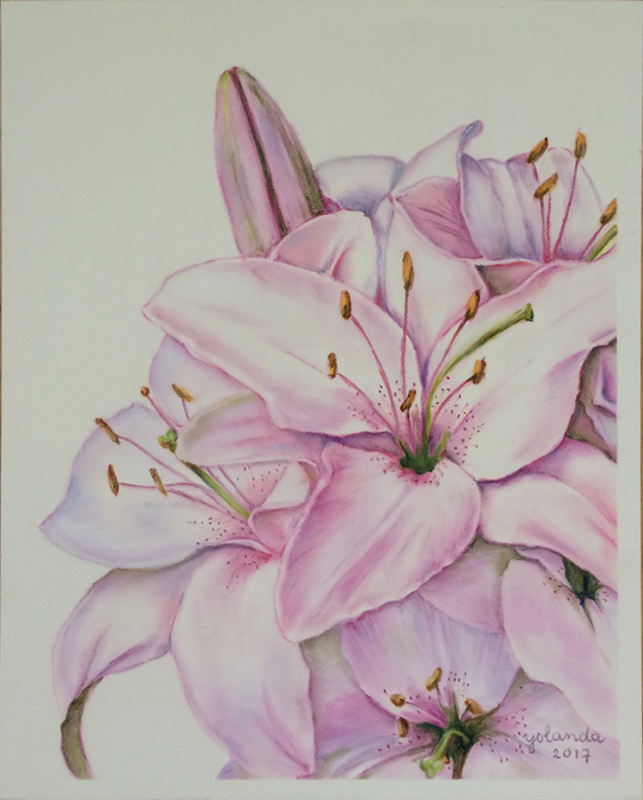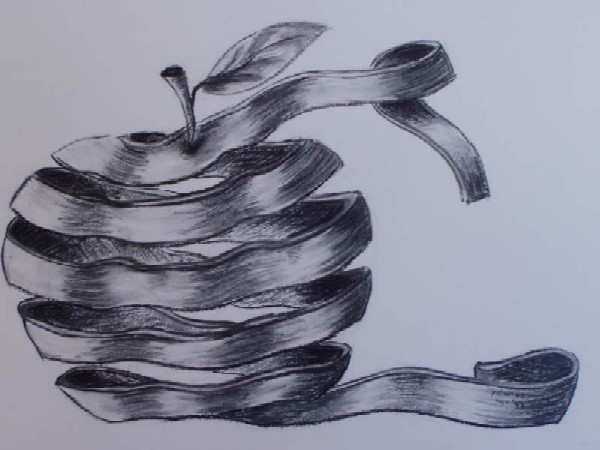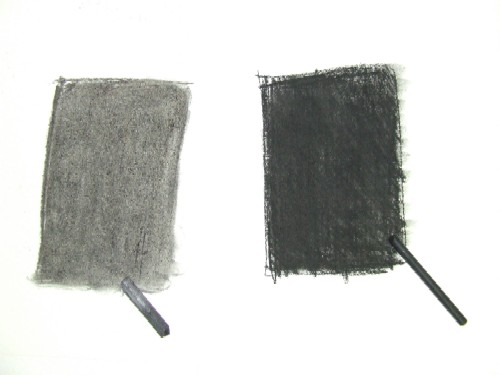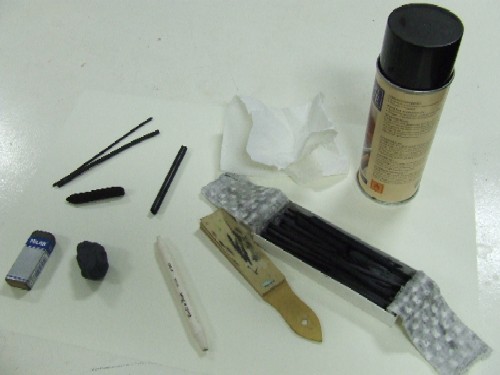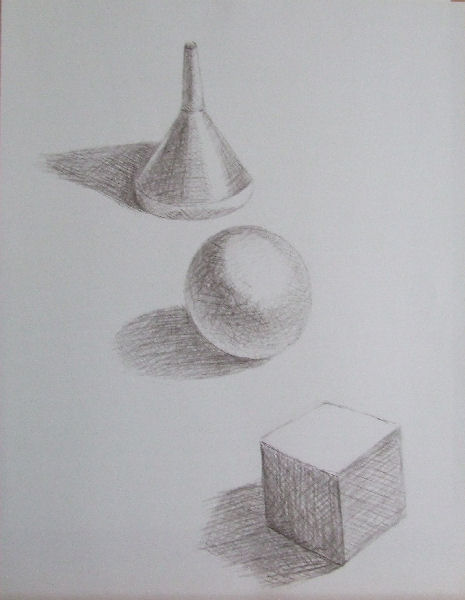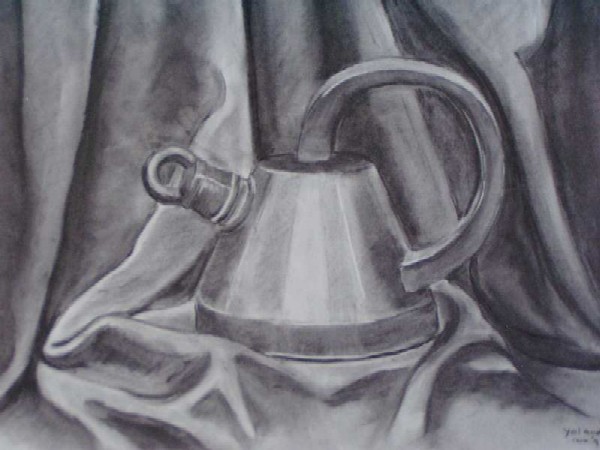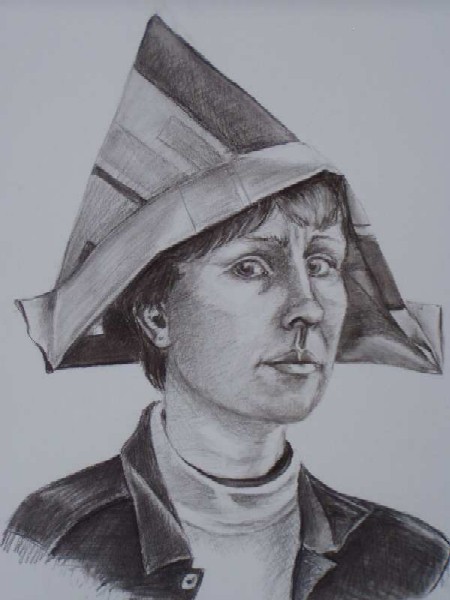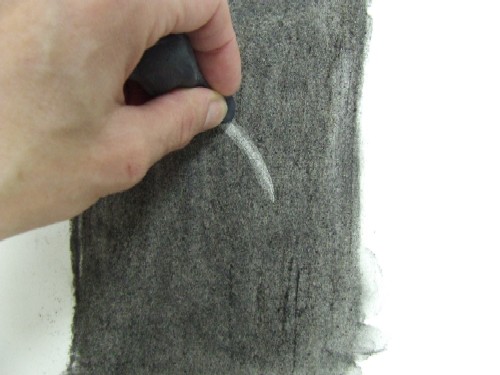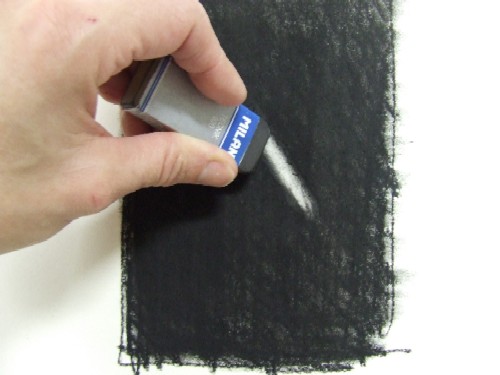Siberian chalk is compressed charcoal sticks. These have a fixed thickness of about 5-6 mm and produce a deeper black color than regular charcoal. They feel slightly oily.
On the left, a flat, even dark area is made with charcoal, and on the right, with Siberian chalk. |
To work with charcoal or Siberian chalk, you don't need much. A few sticks of charcoal or Siberian chalk, a tortillon or cloth, a kneaded eraser, and a plastic eraser. A holder with pieces of sandpaper can be handy to sharpen your stick to draw accurate details. When your drawing is finished, you must fix it well because both charcoal and Siberian chalk smudge easily.
There are several basic techniques in charcoal. You can use these separately or in combination with each other. |
The hatching technique.
With the hatching technique, as the name suggests, you apply the charcoal in a hatching motion. You can do this with thick, bold lines or very delicately with thin lines. If you want to darken an area, you must hatch over it again, but not in the same direction. If you did, you would eventually color your entire area black, and it would be completely "closed off." Thus, a very dark area consists of many lines, applied in various directions on top of each other. |
The blending technique.
With the blending technique, you smudge the applied charcoal partially with your finger, a tortillon, or a cloth. By smudging or blending, you create tonal values. If you want a spot to be darker, you simply apply more charcoal, which you then rub out again. Do not clean your hands in between, as the charcoal will stick to your clean fingers instead of the paper, making the spot lighter.
With the blending technique, you can create very soft transitions between tones. |
| Combining the blending and hatching techniques is also possible. You can use the blending technique to apply tones and the hatching technique to create texture. |
Highlighting.
Highlighting is the removal of applied charcoal or Siberian chalk. You can do this with a kneaded eraser, a plastic eraser, or even with a clean cloth or finger. You can combine highlighting with both the hatching and blending techniques. However, when using the hatching technique, make sure to dab with the kneaded eraser or your finger instead of smudging; otherwise, you will erase the lines.. |
| When working on a paper made black with Siberian chalk, you won't remove much chalk with a cloth. In that case, you will need a kneaded eraser and a plastic eraser. Using a plastic eraser to highlight allows you to create very sharp lines. Also, with this eraser, you can almost make your paper white again. |



